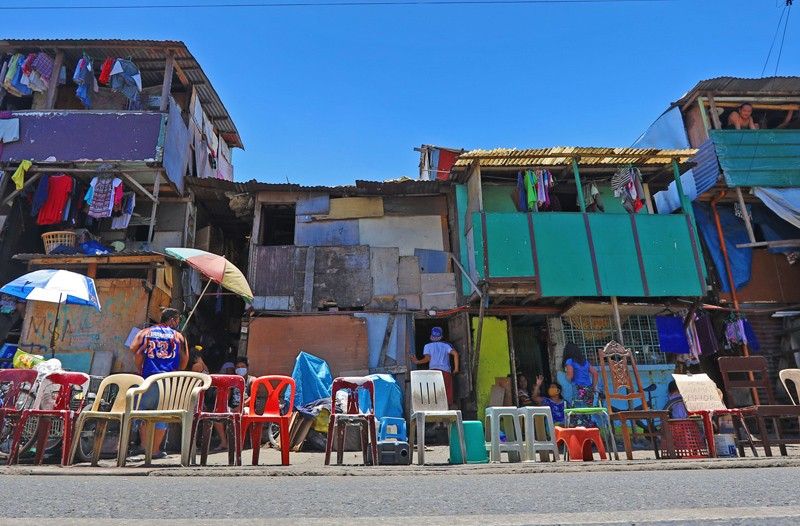What happens when the health system is neglected in the time of the pandemic?


The global crisis that we are experiencing right now is a public health issue first and foremost.
And so, the group that should handle the task force assigned to help in this critical situation should consist of public health professionals who are knowledgeable and experts in managing such a crisis, not military or police generals. Although, of course, we will need their help in implementing strategies that the task force might need to do. This is not as simple as a carryover, though, and the problem is really complicated by many other factors.
Our country continues to face public health challenges because of its resource and capacity limitations as well. If the government is determined that this task force succeed, they should focus first on the budget.
Right now, the Philippine health system is highly fragmented resulting from the government’s transfer of power from a central government to the local or regional administration.
This has led to the inability of these government units to allocate sufficient funds for health care, resulting in high out-of-pocket spending that has impoverished many more families.
Do all “ayudas” go straight to deserving beneficiaries, or are these funds misappropriated and go into the pockets of local officials?
Guidelines on how to allocate the budget should be given and distribution of this budget should not be made difficult for the recipients. The long queues, crowding and failure of social distancing every time this occurs is definitely a huge mistake.
As of late, there has been demoralization among health professionals due to the reduction of salary, increased workload, and politicization of health, as local officials try to control the management and delivery of health services and have broken many promises.
There are on average only 3.7 doctors and 8.2 nurses per 10,000 people nationwide, which is way below what the WHO has prescribed, which is one doctor and one nurse per 1,000 persons.
As cases surge, the DOH standard of nurse to patient is 1:12 and at the ICU it should be 1:1 for critically ill patients who needed to be watched every minute of the day.
Before, nurses’ shifts used to be every eight hours, but since nurses are really scarce these days, it has become a 12-hour shift with no increase in salary. If these health professionals get sick, instead of a 14-day quarantine now only 10 days are mandated.
With doctors and nurses dying because of the virus and others resigning due to the very low salaries, unacceptable health benefits, and lack of or late overtime pay, we should expect a further decline in numbers and deterioration of care from an overworked health force.
This is the time that infrastructure projects should be put on hold and instead some of these infrastructure funds should be dedicated to health-related issues such as vaccination acquisition, cheaper but accurate testing kits, PPEs and masks for health professionals (preferably washable masks for the general public made locally with indigenous materials).
The budget for the epidemiology and surveillance program (to control the spread of disease) should be given more emphasis and slashing its budget to half will not do any good.
Others programs should be prioritized as well, like the Health Facilities Enhancement Program for the construction, rehabilitation and upgrading of health (quarantine) facilities and purchase of medical equipment and procurement of ambulances; the National Reference Laboratories and Health Information Technology, which are responsible for conducting surveillance of communicable diseases, data collection, epidemiological analyses and dissemination (the laboratories also participate in periodic national disease surveys); and HRH Institutional and Capacity Management, which takes charge of health workforce governance or leadership capacity at a national level and all other levels. These programs are considered fundamental in order to steer the health workforce agenda in the country for effective service delivery.
What is happening now is that, despite the surge of COVID-19, corruption has not stopped, with the stealing of some P15 billion at PhilHealth and Pharmally awarding P8 billion in supply contracts in 2020, even if the owner is a fugitive from Taiwan.
Filipino health workers are the collateral damage. They are the hardest hit among all of us. Not only are they overwhelmed by the surge of COVID cases and deaths, they also have to face other serious problems such as being underpaid, deprived of protective equipment, physical attacks and now recently a scolding and demeaning words that they truly do not deserve.
As of late September, 9,347 health workers have contracted COVID-19 in the country, with 60 of them dying. Among the infected health workers, 3,263 are nurses, 1,719 physicians, 720 nursing assistants, 436 medical technologists, 227 midwives, 173 radiologic technologists, 101 pharmacists, and 74 respiratory therapists.
Only 5,216 health workers have so far been hired to fill the DOH-approved 9,297 slots for emergency hire. This slow hiring means medical frontliners continue to work beyond their capacity to treat the piling number of COVID-19 patients.
The DOH itself has also noted the difficulty in hiring health workers because many of them have private services that they cannot leave. It also does not help that the entry-level salary for healthcare workers is low.
The average salary for a nurse in a government hospital is about $250 to $350 per month. In private hospitals, it ranges from $200 to $250 per month.
In October last year, the Supreme Court set a minimum monthly salary for nurses in public hospitals of $600 per month, but the decision has yet to be implemented.
The country’s shortage of personal protective equipment (PPE) is also contributing to the huge number of infected health workers. According to the WHO, the global shortage of PPEs is affecting healthcare workers worldwide.
This shortage could have been eased if our country tapped local manufacturers (which could help lower unemployment also) and local suppliers to manufacture its PPEs, such as the local textile industry. But instead, we rely on expensive imported PPEs.
In these trying times and despite the very real danger to themselves, Filipino frontline workers put their own safety and wellbeing aside to provide lifesaving support and protection to the people most in need.
As we give recognition to local, real-life heroes, we also need to protect and keep them free from harassment, threats, intimidation and violence.
* * *
For inquiries, call 8401-8411 or 0917-571-1992, 0999-883-4802 or email gc_beltran@yahoo.com. Follow me on facebook@dragracebeltran.



















